Posted by Elena del Valle on October 27, 2008
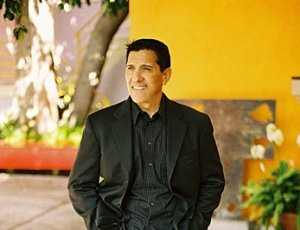
Luis Martinez, CEO, Punto Rojo Sports Marketing Group
Photo: Punto Rojo Sports Marketing Group
A podcast interview with Luis Martinez, CEO, Punto Rojo Sports Marketing Group is available in the Podcast Section of Hispanic Marketing & Public Relations, HispanicMPR.com. During the podcast, he discusses how European athletic brands plan to target U.S. Hispanics via sports marketing ventures with Elena del Valle, host of the HispanicMPR.com podcast.
Luis, originally from Mexico, has to his credit over 25 years of experience in Hispanic marketing and advertising in the U.S. and Latin America. During his career, Luis has supported the efforts of companies such as General Motors, Greyhound Lines Inc., Frito Lay Inc., Coors Brewing Company, Alaska Airlines, Intel, Pedro Domeq Wines and Spirits, Pepsi Cola, Kellogg’s, Tabasco, AT&T, and Western Union.
His experience includes major general market advertising agencies with their Hispanic assignments such as WONGDOODY Advertising, Momentum World Wide and Bozell & Jacobs. Luis has a B.A. from University of Texas and a M.A. from Universidad Nacional Autónoma de México (UNAM) in Mexico City.
To listen to the interview, scroll down until you see “Podcast” on the right hand side, then select “HMPR Luis Martinez,” click on the play button below or download the MP3 file to your iPod or MP3 player to listen on the go, in your car or at home. To download it, click on the arrow of the recording you wish to copy and save it to disk. The podcast will remain listed in the October 2008 section of the podcast archive.
Make your ads resonate with Hispanics
Listen to C&R’s Research Director Liria Barbosa in
“Hispanics’ Perspective on Advertising” audio recording

Liria Barbosa gives a presentation and participates in an extended Q&A discussion about
• Type of ads Latinos prefer
• Latino top media choices
• Percent of Latinos who tried products because of ads
• Percent of Latinos who purchased products because of ads
• What makes an ad “Hispanic”
• If ad language is important for bicultural Latinos
• What to keep in mind when targeting bicultural Latinos with ads
Click here for information on Hispanic Perspectives on Advertising
Posted by Elena del Valle on October 24, 2008
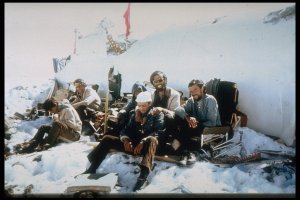
A scene from the film Stranded – click on the image to enlarge
Photos, video: Zeitgeist Films
On October 13, 1972 after boarding a flight for a match in Chile a team of students from Montevideo, Uruguay disappeared. Two days before Christmas, 16 of the 45 passengers resurfaced having survived 72 days after their plane crashed on a remote Andean glacier. Stranded: I’ve come from a plane that crashed on the mountains, a documentary about their story, opened in theaters October 22, 2008.
Following the crash, the governments of Argentina, Chile, and Uruguay searched the area for the survivors without success. Seventy days after the plane crashed, a Chilean shepherd in the foothills of the Andes, caught sight of two men on the other side of a torrential river. Gesticulating frantically, they fell to their knees, their arms wide open. The shepherd took them for tourists and left.
The next day, he returned to the same spot and noticed that the men were still there. The sound of the water was so loud on the banks of the river that it was impossible for the three men to hear each other so the shepherd threw a piece of paper and a pen, wrapped in a handkerchief, over the river. The two bearded men in rags wrote something on the paper and threw it back to the shepherd: “We’re from a plane that crashed on the mountains. Fourteen of our friends are still alive up there.”
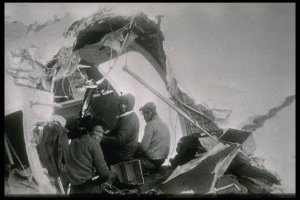
A scene from the film Stranded – click on the image to enlarge
Following their rescue, the survivors admitted they had eaten human flesh to survive: “… the day came when we had nothing left to eat, and we said that Christ, by offering his flesh and blood during the Last Supper, had shown us the way by indicating that we had to do likewise: take his flesh and blood, incarnated in our friends who had died in the crash… It was a personal communion for each one of us… It’s what helped us to survive…”
The story was first documented in the 1973 bestseller Alive and the 1993 Ethan Hawke movie by the same name. The recently released documentary was made by Gonzalo Arijon, a childhood friend of some of the survivors, and was produced by Marc Silvera and 16 of the survivors.
“Several of these survivors are friends of mine. We shared the same carefree teenage years. I was shocked by their disappearance and dumbfounded when they came back to life. I shared whole nights with them, listening to their stories which constantly revolved around their survival up there. Their tragic – but also amazing! – epic continued to haunt them, day after day, year after year. And it’s still the case today,” said Arijon.
“Despite a best-seller (Alive! The Story of the Andes Survivors by Piers Paul Read, five million copies sold in English alone), and despite a Hollywood movie (Alive by Frank Marshall, a 1993 Disney-Paramount co-production), we still have the feeling that this story has never been told from the inside, that what they have to say has never really been heard. And there is always this growing feeling among them that they have something to tell us, to transmit to us, that is way beyond an ‘enormous anecdote’…
Thirty years after the event, I suggested making a film about it. A film that tells of the creation of a new society, cut off from the rest of the world, requiring the reinvention of codes and rules. No leaders—in the traditional sense of the term—but rather a collection of personalities that are gradually revealed, which harmoniously head towards a common objective: to get out of this hell together, and return to the land of the living together. An exemplary story about exceeding oneself, getting to know one another, that deals with the importance of friendship and solidarity in extreme situations.”

A scene from the film Stranded
Arijon relied on on-location interviews, archival footage and reenactments to share the story, told by the survivors themselves, with the audience. Thirty-five years after the crash, the survivors returned to the crash site which they named the Valley of Tears, where they shared their harrowing story on film.
“At the time when the group was having trouble making the decision, I remember saying: ‘If I were dead, there, in the snow, and you were debating whether or not to use my body in an attempt to survive… If, while being dead, I had the possibility of getting up, I would kick your asses, you bunch of idiots! ’ They all listened to me in silence, and I think that these words helped the group to take the step,” said Gustavo Zerbino, one of the survivors.
“When Roberto cut the first thin strips of meat, he placed them on the cabin. I went to eat hastily, in secret… I felt ashamed the whole time I was up there. I wanted to hide that. For a long time, I was obsessed by this story of human meat… But I couldn’t admit it…,” said Adolfo “Fito” Strauch, another survivor.
The film is 126 minutes long in color and black and white in Spanish with English subtitles. Stranded received awards at festivals around the world including the 2007 Sundance Film Festival.
Arijon, born in Uruguay in 1956 has lived in France since 1979. Over the past 15 years, he has directed several documentaries, including Lula’s Brazil: Managing a Dream; Far Very Far from Rome; The Dark Side of Milosevic; Rio de Janeiro–A Vertical War; and For These Eyes.
“Happy for No Reason” audio recording

Presenter Marci Shimoff, author, Happy for No Reason
What: An audio presentation by Marci Shimoff and Q&A with Marci Shimoff and HispanicMPR.com audio program host Elena del Valle about finding happiness.
Available exclusively on HispanicMPR.com!
More information on “Happy for No Reason” audio recording with Marci Shimoff
Posted by Elena del Valle on October 23, 2008
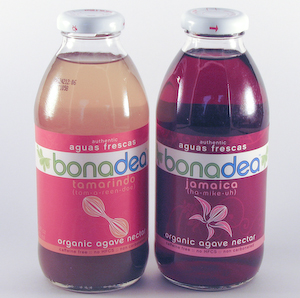
Bonadea Tamarindo and Jamaica aguas frescas
Photo: Simon & Baker
Bonadea Drinks, a Los Angeles beverage company, began offering aguas frescas (Spanish for refreshing waters) to customers last month. Believing that there is a rising demand for healthy, organic beverages the owners of Bonadea Drinks, Arnulfo Ventura, a Southern California native and the son of Mexican immigrants and Jose L. Domene, a Mexico native, launched their company ealier this year.
Domene and Ventura hope to bring a unique twist to the market by mixing their secret family recipes into aguas frescas. They use all natural, organic ingredients sweetened with organic agave nectar.
“In three weeks Bonadea has become our best selling juice drink. Our customers love the natural, authentic taste of the Tamarindo and the Jamaica,” said Sarah Hiken, co- owner, the Village Cheese House in Palo Alto.
The beverages, made in Northern California, are available for purchase in California and sell between $1.99 and $2.49, depending on the retail outlet. The all-natural, agave-sweetened, aguas frescas come in Tamarindo (tom-a-reen-doe) and Jamaica (ha-mike-uh) flavors.
The roselle plant base used in the Jamaica drink is said to aid with digestion, weight control, high blood pressure, circulatory stimulation, fevers, and cholesterol. The tamarind is said to aid with digestion, blood sugar levels, sore throat, alcoholic intoxication, high blood pressure, circulatory stimulation and cholesterol. The agave nectar is extracted from the core of the agave plant, also commonly referred to as the piña of the plant in Spanish.
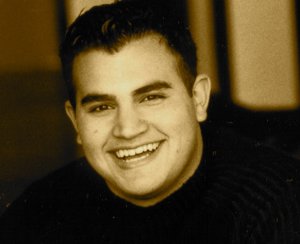
Arnulfo Ventura, co-founder, Bonadea Drinks
“Our Bonadea authentic aguas frescas bring a fresh Latin twist to the stagnate beverage market,” said Ventura, co-founder, Bonadea. “Our family’s secret aguas recipes have been a smash hit with everybody from beverage connoisseurs to parents looking for a healthy beverage alternative for their kids. Bonadea was founded from a basic unfulfilled need experienced by Jose and myself. We were both health conscious, on-the-go and wanted a beverage we could culturally relate to, in short, we felt overlooked at the shelf. Now we want to share our favorite aguas recipes with the rest of the world.”
“Segmentation by Level of Acculturation” audio recording

Presenter Miguel Gomez Winebrenner
Discusses
- Assimilation versus acculturation
- Factors that affect Latino acculturation
- How to know if someone is acculturated
- Number of years necessary for acculturation
- Effects of immigration debate on acculturation
- Three main ways of segmenting Latinos
Click here for details about “Segmentation by Level of Acculturation”

Jose L. Domene, co-founder, Bonadea Drinks
The young entrepreneurs launched their company while completing their studies, receiving their Masters in Business Administration June 2008 at Stanford University. Bonadea first launched in San Francisco and the greater Bay Area, selling at local health markets, sandwich spots, and Mexican grills and restaurants. To mark the launch in Los Angeles, Bonadea staff designed new labels to introduce the aguas frescas to the Latino dominated Los Angeles market.
The partners developed the name of their company, Bonadea (pronounced bone-uh-dee-uh), from Bona Dea, believing the Latin roots translate to “the Good Goddess, the deity of fruitfulness in the earth and the patron of healing, chastity and virginity in women.”
In searching for a name, they wanted a word to honor the women in their lives and the family recipes they shared with them; they also wanted a word that reflects the ancient process they use in extracting the base of the aguas from their virgin state while attempting to preserve some of their natural health benefits. They also liked that it sounds like buen dia (Spanish for good day) or buena idea (Spanish for good idea).
Bonadea Drinks was established in Los Angeles, California earlier this year. The company is wholly owned by Domene and Ventura.
Make your ads resonate with Hispanics
Listen to C&R’s Research Director Liria Barbosa in
“Hispanics’ Perspective on Advertising” audio recording

Liria Barbosa gives a presentation and participates in an extended Q&A discussion about
• Type of ads Latinos prefer
• Latino top media choices
• Percent of Latinos who tried products because of ads
• Percent of Latinos who purchased products because of ads
• What makes an ad “Hispanic”
• If ad language is important for bicultural Latinos
• What to keep in mind when targeting bicultural Latinos with ads
Click here for information on Hispanic Perspectives on Advertising
Posted by Elena del Valle on October 22, 2008
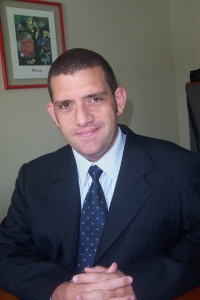
David Burgos, account group director, MillwardBrown
The David Ogilvy Awards for Excellence in Advertising Research presented annually by the Advertising Research Foundation (ARF) recently added a multicultural category award to mark the 15 anniversary of the awards. The announcement was made by Robert Barocci, president and chief executive officer of ARF.
“Adding the Multicultural category to the David Ogilvy Awards is a natural progression as multicultural research continues to play an important role in advertising,” said David Burgos, vice president, Multicultural Practice, Millward Brown, and co-chair of the ARF Multicultural Advertising Council. Burgos has led the initiative with ARF to raise awareness of the importance of multicultural marketing and strategy.
“The addition of this new category reflects the fact that the multicultural segment is one of tremendous growth and purchasing power, and requires targeting strategies and campaign development that work in tandem with the mainstream rather than in silos.”
“Best in Class Hispanic Strategies” audio recording


Presenters Carlos Santiago and Derene Allen
-
Find out what makes 25 percent of the top 500 Hispanic market advertisers out perform the remaining companies
-
Discover what questions to ask, steps to take to be a Best in Class company
Click here for more about “Best in Class Hispanic Strategies” audio recording
“The industry is aware of many outstanding multicultural campaigns that achieve marketplace success. It’s time to acknowledge the creative and research excellence behind these successes. Broader awareness of multicultural marketing will narrow the gap between ethnic and mainstream marketing and lead to better integration of the two over time,” said Joel Rubinson, chief research officer, ARF.
The list of judges for the new multicultural category will be released at the next annual gala. Past judges have included leaders in the marketing and research industry. Organizers promise that the upcoming Awards will have a similar caliber of judges including experts in multicultural marketing and research.
“The Ogilvy Awards do not honor research methods, tools or techniques. Rather, they celebrate breakthrough programs where creative inspiration and research insights combine to produce an outstanding advertising campaign. Examples of these breakthrough moments are: When skillful analysis and creative interpretation produce ideas that help drive strategy, creative and media planning; when research overcomes fear and conjecture to give life to unique advertising by providing evidence of its marketplace potential; when the creative process uses research to find unexpected ways of looking at and talking about a brand and its promise,” said a spokesman for the Ogilvy Awards when asked about the selection criteria for the multicultural awards.
The ARF Ogilvy Awards celebrate the role of consumer research in creating successful advertising. Named to recognize David Ogilvy’s spirited advocacy of the importance of research in making good advertising better, the awards honor some of the best research-driven campaigns in business categories and the industry.
The ARF is accepting submissions for the 2009 competition until December 16, 2008. The 2009 winners will be honored at the 55th Annual ARF Convention + Expo on March 31 at the David Ogilvy Awards Gala in Times Square, New York.
Founded in 1936 by the Association of National Advertisers and the American Association of Advertising Agencies, the mission of the ARF is to “improve the practice of advertising, marketing and media research in pursuit of more effective marketing and advertising communications.” ARF members include more than 300 advertisers, advertising agencies, associations, research firms, and media companies.
Target Latinos effectively by anticipating changes in the market with
“Hispanic Projections with 2007-08 update” audio recording

Presenter Roger Selbert, Ph.D.
Find out
- About Latino buying power growth in the future
- How Latino market growth compares with other markets in the U.S.
- What drives the rise of Latino economic clout
- Who should target the Latino market
- What is the size of the Hispanic affluent market
- If the luxury Latino market is growing
Stay ahead of your competition with “Hispanic Projections”
Posted by Elena del Valle on October 21, 2008
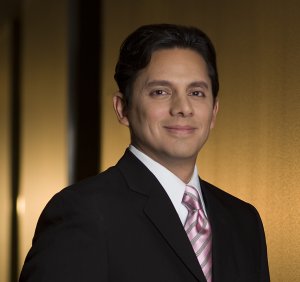
Jose Pinero, director of Multicultural Marketing, Microsoft
Photo: Microsoft Corp., BIC
Relying on a 2002 U.S. Census Bureau study that indicates that close to 70 percent of all Hispanic-owned businesses make less than $50,000 a year in gross sales and close to 70 percent have fewer than four employees; Microsoft Corp. recently announced a two year sponsorship of the National Hispanic Business Information Clearinghouse (BIC) to promote opportunities for Hispanic entrepreneurs and businesses in the United States through the use of technology.
In addition to monetary support Microsoft will also provide content and software solutions for Hispanic entrepreneurs visiting the BIC Technology website. Microsoft promises a host of software and information specifically targeting Hispanic business owners.
According to the Small Business Administration Office of Advocacy, nearly one-third of all Hispanic-owned businesses fail to survive four years. Microsoft executives hope to affect the statistics by supplying technology support.
Microsoft teamed with BIC as the founding technology partner of an online initiative for Hispanic business owners and entrepreneurs. A spokesperson for Microsoft indicated the company’s executives expect the program will “assist thousands of Hispanic entrepreneurs.”
“Technology is a critical tool that will help Latinos advance in both their life and career,” said Jose Pinero, director of Multicultural Marketing, Microsoft. “At Microsoft we are very excited to provide content for the BIC’s technology section and empower Latinos to succeed in their business enterprises.”
Reach Hispanics online today with
“Marketing to Hispanics Online” audio recording
Identifying and characterizing the booming Hispanic online market


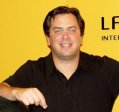
Joel Bary, Alex Carvallo and Matias Perel
Find out about
• The millions of Latinos online
• Latino online users by gender
• What they do online
• Their language preferences
• How to reach Hispanic urban youth online
• What affects their online behavior
• What influences their purchases
Click here for information about “Marketing to Hispanics Online”
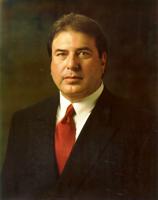
Sal Gomez, founder and CEO, BIC
“The BIC is a unique, multilingual Web site that provides Latino entrepreneurs and small-business owners with top-rated business resources,” said Sal Gomez, founder and chief executive officer of BIC. “At nhbic.org, you will find a wealth of information on starting, marketing and managing your business, as well as local resources and training to help you succeed.”
The BIC website is a free, bilingual online service for entrepreneurs, offering business solutions in English and Spanish about technology, business articles, videos, templates, tools and resources, small business search engine, demographic reports, and including geographically based content.
National Hispanic Business Information Clearinghouse, a not-for-profit organization, launched its bilingual website in 2007 to provide information to Hispanics starting or expanding a business. Its purpose is to empower new and established entrepreneurs, build wealth in the Latino community, and boost Hispanic contributions to the U.S. economy.
BIC’s lead corporate sponsor is Western Union, to date contributing $2 million through its “Our World, Our Family” global economic opportunities program. BIC is also funded by a $3.3 million grant from the U.S. Department of Labor. Founded in 1975, Microsoft is a leader in business software and services.
“Segmentation by Level of Acculturation” audio recording

Presenter Miguel Gomez Winebrenner
Discusses
- Assimilation versus acculturation
- Factors that affect Latino acculturation
- How to know if someone is acculturated
- Number of years necessary for acculturation
- Effects of immigration debate on acculturation
- Three main ways of segmenting Latinos
Click here for details about “Segmentation by Level of Acculturation”
Posted by Elena del Valle on October 20, 2008

Monareta’s new album Picotero
Photos, song: Nacional Records
Earlier this month, Monareta, a Colombian duo that divides its time between New York City and Bogotá, launched Picotero, its latest album. In the past two years, the group released two digital albums on the Nacional Records label; and placed songs in films La Mujer de Mi Hermano and Warner Pictures’ upcoming Pride and Glory, and on Chicas Project, a mun2s television program. Scroll down to listen to Me Voy Pal Mar from the Picotero album.
Picotero is described in promotional materials as “intelligent and danceable, a unique fusion of styles refined over several years.” Andres Martinez, Monareta’s composer, producer and vocalist, mixes break beats and hip hop flows with live keyboard performances by Camilo Sanabria. The two became popular in clubs and electronic music festivals in their hometown of Bogota, Colombia. They named the band for the brand of BMX bike they rode as children. The music they perform is influenced by much of what they enjoyed in their formative years.
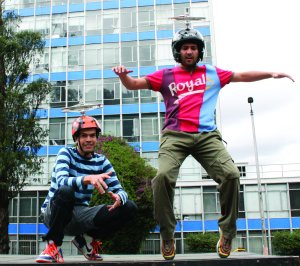
Monareta is Andres Martinez and Camilo Sanabria
“Growing up, even as young as 11, I was really involved in the local freestyle street bike scene. All the street bikers in Colombia were heavily influenced by the break dance and electric boogaloo arriving from the U.S.,” said Martinez. “We heard groups like the Beastie Boys and Public Enemy and they completely changed our lives. And so that’s how we got the name for our group: It’s a homage to the`80s break dance, hip hop, BMX and the fashion scene that came from abroad to influence us in South America.”
With Monareta sounds to prove his potential Martinez received a Fulbright scholarship to pursue a Master of Arts in composition and film scoring at New York University. He moved from Bogotá to New York City and immersed himself in the local music scenes. Soon after that Martinez began integrating what he was learning with his studies into the group’s cinematic sound.
Monareta mixes electronic music with cumbia and champeta, the Afro-Colombian genre native to the streets of Colombia’s Caribbean coast. They also incorporate the reggae, dub and calypso sounds popular in the coastal cities. According to promotional materials, the track Llama in the new album especially illustrates this fusion, where the cumbia upbeat flows with a reggae groove and dub vocals. Recently, the group has split time living in Colombia and Brooklyn, while performing across the United States. In 2008, Monareta performed at South by Southwest and North by Northeast in Toronto.
Click on the play button to listen to Me Voy Pal Mar from the new album Picotero.
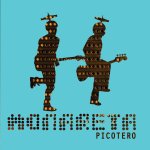
Click here to buy Picotero
Posted by Elena del Valle on October 17, 2008

Do-It-Yourself Public Relations Kit
Photo: Zable Fisher Public Relations
In the third edition of the e-book Do-It-Yourself Public Relations Kit A Step-By-Step Guide to Conducting Your Own Public Relations Campaign Margie Zable Fisher shares detailed insights for business owners, executives and anyone interested in getting the word out about his or her product or service to the public.
The 165-page PDF file, available for purchase online for $97, is divided into three sections: Preparing for Your Public Relations Efforts included the first three chapters; Getting Publicity included chapters 4 through 22; and Additional Public Relations Techniques in the remaining chapters.
In 2003, she wrote the first edition of the e-book while she was pregnant. Prior to writing the book, she had been offering do-it-yourself workshops in South Florida several times a year for business owners and executives who wanted to learn how to promote their business. The book, she thought, would expand her reach to the national level.
Hispanic Marketing and Public Relations Understanding and Targeting America’s Largest Minority book

“A must resource for practitioners/professionals expecting to reach US Hispanics; also valuable for college programs in marketing, public relations and communications. Highly recommended.”
Choice magazine
Click here for information on the Hispanic Marketing & Public Relations books
In the first chapter of the e-book, Zable Fisher begins by defining advertising, public relations and publicity and explaining how each one is distinct from the others. In the following chapter, she explains how readers can identify their Unique Selling Proposition by answering three questions.
She dedicates a lengthy chapter to the development of a public relations plan; discusses how to get publicity; over the next few chapters shares case studies in detail; provides information about the usefulness of editorial calendars; outlines the contents and steps to create a press kit; shares her thoughts on pitching the media; provides interview tips for different types of media as well as guidelines of what to expect and how to interact with media representatives.
In chapters 23 and 24, she talks about the value of free public speaking, seminars and workshops as public relations tools. In the following chapters, she discusses special events; writing a column; being an expert on radio programs; volunteering in the community as well as business groups and non profit organizations; the value of e-newsletters and how to start one. She also discusses letters to the editor and op-eds; public relations online and related issues; useful options few take advantage of; and in the final chapter she addresses crisis issues illustrated with case studies and comments from two practitioners.

Margie Zable Fisher, author, Do-It-Yourself Public Relations Kit
Zable Fisher is the president of Zable Fisher Public Relations, a public relations firm based in Boca Raton, Florida. She is also the public relations columnist for WomenEntrepreneur.com.
Hundreds of professionals, small and medium-sized business owners and managers have attended her workshops, purchased Do-It-Yourself P.R. materials, and worked with her one-on-one. With her assistance her clients have secured publicity placements, in USA Today, The Wall Street Journal, The New York Times,The Associated Press (AP), the Today Show, Good Morning America, CNN, CNBC, Fortune Small Business, The Boston Globe, The Los Angeles Times, Inc. Magazine, and Money Magazine among others.
Zabler Fisher graduate from the Boston College School of Management and received a Masters in Business Administration degree from Florida Atlantic University. She is also a certified coach and a certified toastmaster.
“Best in Class Hispanic Strategies” audio recording


Presenters Carlos Santiago and Derene Allen
-
Find out what makes 25 percent of the top 500 Hispanic market advertisers out perform the remaining companies
-
Discover what questions to ask, steps to take to be a Best in Class company
Click here for more about “Best in Class Hispanic Strategies” audio recording
Comments:
Filed Under: Books
Posted by Elena del Valle on October 16, 2008
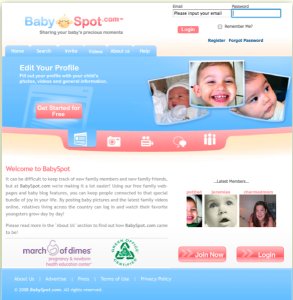
Babyspot homepage – click on image to enlarge
Photos: Babyspot.com
In November 2006, Miami partners James Rivera and Zameer Upadhya established Babyspot.com, a website for parents and their families. By September 2007, they had launched Babyspotlatino.com, a related project and social networking site for Latino parents and their families. The website debut was announced on Despierta America, a Spanish language morning show on Univision. Within 15 minutes of the airing of the show, 100 families joined the site. The website now has 300 members and 5,000 visitors per month.
“Debuting on the leading Spanish language morning talk show as we are about to launch this new site is simply amazing. Our main goal is to provide an intimate, culturally relevant networking environment that allows for Latino parents and their families to safely connect on various levels with their family members and friends who are experiencing the same joys as they are,”said Upadhya, chief executive officer, BabySpotLatino.com.
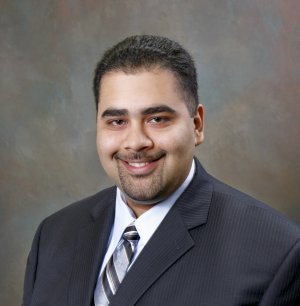
Zameer Upadhya, CEO and co-founder, Babyspot
“NacerSano.org , the March of Dimes’ Latino arm, is going to provide Babyspot Latino with rich educational material on pregnancy and baby health issues designed to help keep families and their children happy, healthy and safe.”
Discover from a new mom market expert how to reach Latino moms by listening to
“Marketing to New Hispanic Moms – a case study” audio recording

Presenter Cynthia Nelson, COO, Todobebe
Find out about
• New Latina mom market
• Baby demographics including market size, profile
• New moms’ language preferences
• Latino baby market trends
• Factors influencing Hispanic baby market
• Location of new Hispanic moms’ market
• Issues affecting new Latino moms
• Todobebe strategies
Click for information on “Marketing to New Hispanic Moms – a case study”
In making their business decisions they relied on research that indicates Hispanics surveyed were more likely (69 percent) than non Hispanics (42 percent) to watch, read or listen to online content. The Forrester survey led researchers to conclude that social media strategy can be an important tool for marketers trying to reach Latinos online.
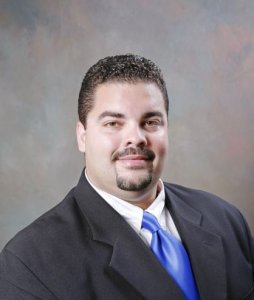
James Rivera, COO and co-founder, Babyspot
“The Latino families that are members on BabySpotLatino are having a great time with our site! They love to customize and really dress up their babies profile. Oh, and just like my wife they love to share their profiles, videos, photos with their family and friends on a safe and secure spot on the web. I am so happy to offer families all over the world a place ‘a spot’ they can feel comfortable with. This is what BabySpotlatino.com offers,” said Rivera, chief operating officer and co-founder, Babyspot.
Babyspot Latino offers Latino parents and their families a free, “safe and secure” forum to celebrate the joys of becoming and being parents, grandparents, aunts and uncles. They can also network and share educational information, advice and their experiences with loved ones near and far. On the website, parents and their relatives can share their profiles privately or publicly, upload pictures and videos, blog and chat live.
Prior to BabySpot.com, Upadhya was founder and chief executive officer of AMR Consulting Services (AMR). AMR provided services for small businesses and leadership development for professionals and students. Prior to building AMR, he was an auditor with BDO Seidman, LLP where he handled financial audits. Upadhya began his career as a financial analyst at the Johnson & Johnson Financial Leadership Development Program.
Before starting BabySpot.com Rivera was chief executive officer of South Dade Wireless, Inc. for three and a half years. He helped grow the company from two retail outlets and $300,000 in revenue to six retail outlets and $6 million in revenue. He began his career as an auditor with PricewaterhouseCoopers, LLP in Miami. Rivera earned a Masters in Business Administration degree from Nova Southeastern University.
Posted by Elena del Valle on October 15, 2008
By Brian Requarth,
Founder, VivaReal.com

Brian Requarth, founder, VivaReal.com
Photo: VivaReal.com
Can you imagine buying real estate before actually seeing the property? Believe it or not, real estate agent in Miami, Ines Hegedus-Garcia has had multiple clients from outside the country do just that and she owes it all to the Internet (and her great service of course). “About 30% of our business is foreign nationals and we expect that number to grow.”
For international investors it is a perfect storm, dropping real estate prices and a relatively weak dollar against most major currencies is resulting in foreigners buying up single-family homes, condos and commercial real estate.
Click here to read the complete article
Target Latinos effectively by anticipating changes in the market with
“Hispanic Projections with 2007-08 update” audio recording

Presenter Roger Selbert, Ph.D.
Find out
- About Latino buying power growth in the future
- How Latino market growth compares with other markets in the U.S.
- What drives the rise of Latino economic clout
- Who should target the Latino market
- What is the size of the Hispanic affluent market
- If the luxury Latino market is growing
Stay ahead of your competition with “Hispanic Projections”








































